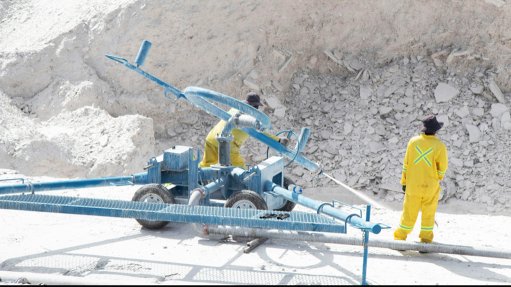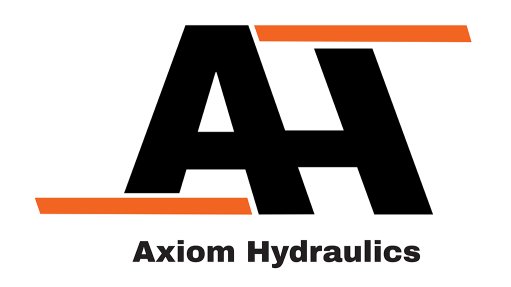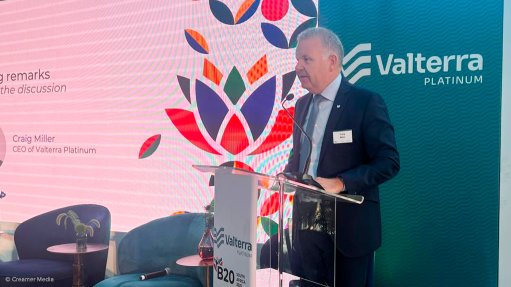GenAI – reimagining the factory floor, today and tomorrow
This article has been supplied.
By: Johan Potgieter - Cluster Industrial Software Lead at Schneider Electric
The world of manufacturing is driven by automation, efficiency and digitisation. And now we have Generative AI (GenAI) – a subset of deep learning – which taking the factory floor to the next, impressive level; unlocking new possibilities for product innovation.
However, first we need to contextualise GenAI within the manufacturing industry. For one, it enables organisations to analyse data from thousands of productions cycles, simulations and decisions – all to improve speed and precision.
Indeed, manufacturers now have the time and scope to run hundreds of ‘what if” scenarios without pausing the production line. It’s virtual proof of concept designed for the sole purpose of exploring innovation and validating changes before implementing it.
Looking at a real-world example, product development, traditionally time consuming and costly, can be sped up by using GenAI to create dozens of iterations – each within a different set of material, performance, sustainability and cost parameters. Engineers become both designers and curators, therefore.
Fundamentally, GenAI can optimise defect detection which is essential for ensuring product quality and customer satisfaction.
“Traditional defect detection methods typically rely on manual inspection or rule-based algorithms, which are time-consuming and prone to errors. GenAI models like generative adversarial networks (GANs) can generate synthetic images mimicking defects, lighting conditions, and orientations.
“This approach accelerates the production of large datasets of synthetic images, which can be used to train, test, and validate machine learning models in various applications, including computer vision, object detection, and image classification,” notes the research paper, Generative AI in manufacturing: a literature review of recent applications and future prospects.
Responsible GenAI usage
As we embed AI deeper into our factories, we must be vigilant about bias, transparency, and data privacy. The manufacturing industry must therefore ensure that these AI-generated developments and designs can be audited, data is protected, and human oversight remains central.
But, and it’s a good but, with GenAI use also comes is a greater need for technical proficiency, data literacy, and adaptability. To that end, new roles are emerging such as AI ethicists, data engineers, digital twin managers.
Importantly, existing roles are becoming more strategic and less repetitive which allow us, the human workers, to focus what we’re really good at: innovation, problem-solving and collaboration.
What is exciting is GenAI allows us to imagine what we can achieve tomorrow; a manufacturing ecosystem that is hyper-efficient, agile and sustainable. A space where man and machine can work side-by-side to solve some of the most pressing challenges of our time—from energy use to supply chain resilience.
Smart Factories
At Schneider Electric, our Smart Factory programme, powered by AVEVA’s industrial software, is a testament to the power of technology. Today, our Smart Factories use digital twins, real-time analytics, and AI-driven insights to enhance everything from production efficiency to predictive maintenance.
Our industrial software solutions are used to achieve real-time visibility of production states, ensuring consistent standards across multiple sites. This integration has enabled us to reduce unplanned downtime, improve operational visibility, and enhance workforce productivity across our Smart Factories.
And testament to above, our Smart Factories in France, Indonesia, China, and Mexico have all been recognised as Advanced Manufacturing Lighthouses by the World Economic Forum (WEF).
Article Enquiry
Email Article
Save Article
Feedback
To advertise email advertising@creamermedia.co.za or click here
Press Office
Announcements
What's On
Subscribe to improve your user experience...
Option 1 (equivalent of R125 a month):
Receive a weekly copy of Creamer Media's Engineering News & Mining Weekly magazine
(print copy for those in South Africa and e-magazine for those outside of South Africa)
Receive daily email newsletters
Access to full search results
Access archive of magazine back copies
Access to Projects in Progress
Access to ONE Research Report of your choice in PDF format
Option 2 (equivalent of R375 a month):
All benefits from Option 1
PLUS
Access to Creamer Media's Research Channel Africa for ALL Research Reports, in PDF format, on various industrial and mining sectors
including Electricity; Water; Energy Transition; Hydrogen; Roads, Rail and Ports; Coal; Gold; Platinum; Battery Metals; etc.
Already a subscriber?
Forgotten your password?
Receive weekly copy of Creamer Media's Engineering News & Mining Weekly magazine (print copy for those in South Africa and e-magazine for those outside of South Africa)
➕
Recieve daily email newsletters
➕
Access to full search results
➕
Access archive of magazine back copies
➕
Access to Projects in Progress
➕
Access to ONE Research Report of your choice in PDF format
RESEARCH CHANNEL AFRICA
R4500 (equivalent of R375 a month)
SUBSCRIBEAll benefits from Option 1
➕
Access to Creamer Media's Research Channel Africa for ALL Research Reports on various industrial and mining sectors, in PDF format, including on:
Electricity
➕
Water
➕
Energy Transition
➕
Hydrogen
➕
Roads, Rail and Ports
➕
Coal
➕
Gold
➕
Platinum
➕
Battery Metals
➕
etc.
Receive all benefits from Option 1 or Option 2 delivered to numerous people at your company
➕
Multiple User names and Passwords for simultaneous log-ins
➕
Intranet integration access to all in your organisation





















